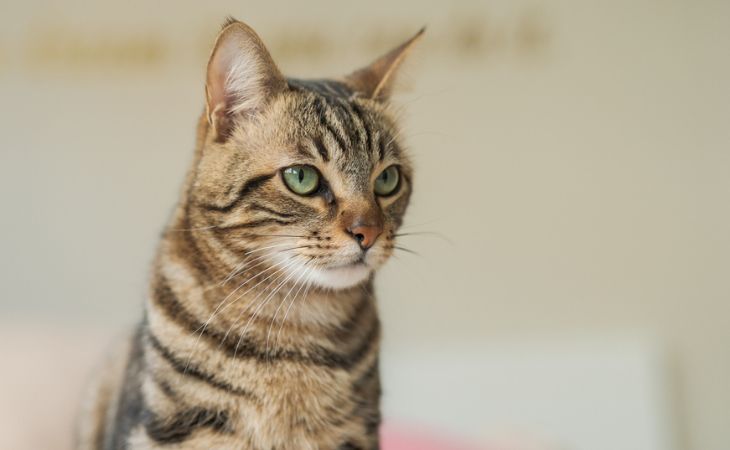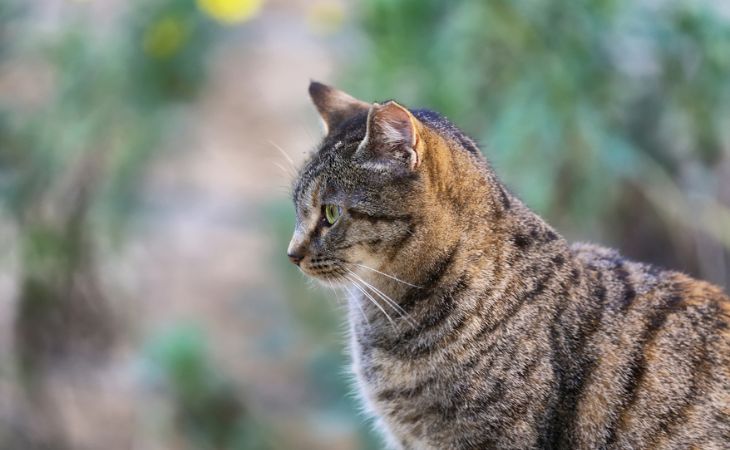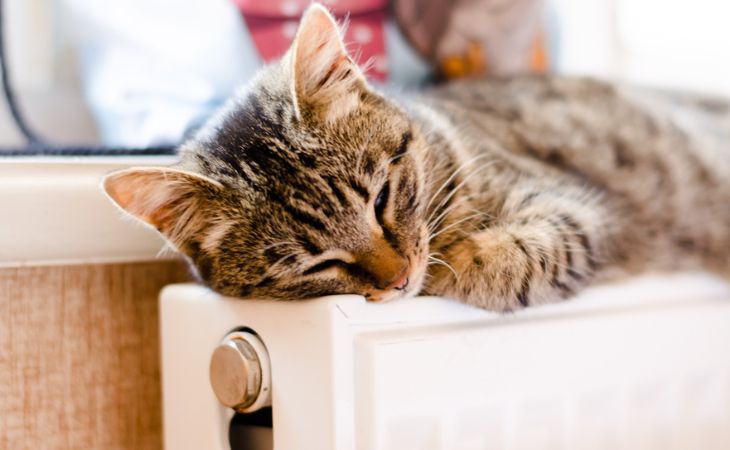Breed standards: LOOF, FIFé, WCF | Size: Medium to large | Average lifespan: 11+ years | Temperament: Lively, gentle, and playful | Coat: Short | Origin: Egypt.
The European Shorthair is a robust, lively, gentle, playful, and friendly companion.
Origins of the European Shorthair
Distant origins
The European Shorthair is very old, however, their origins are not fully known. While, for some, they are a descendent of Egyptian cats, others think that they came from wild felines in North Africa. But one thing’s for certain, whether they are African or European, they are direct descendants of the common cat. In addition, they were very appreciated by the Romans during the 1st century BCE.
A breed that has lived through time and history
The European Shorthair’s fame declined from the 12th century onwards. At the time, the Catholic church assimilated this breed with the devil. It was then the object of murderous hunts. The breed lived through very dark periods (especially those with a black coat). Torture, being buried alive, incineration—this was done for two centuries.
The breed owes its salvation to the deadly plague epidemic that decimated Europe in the early 14th century. Suddenly, what was seen as a demon became an angel, thanks to their talents as rat hunters who were the main vectors of the pest virus. They were reestablished by the Europeans who owe their salvation to these innocent cats. They accepted the European Shorthair breed into their daily life again.
The European Shorthair was completely adopted by the peasants in the 20th century. The breed was long considered like a British Shorthair because of their resemblance and their common origin. The official recognition of this breed was acted in 1981 by the FIFé (Fédération Internationale Féline). Now a breed in its own right, this cat has its own standards that set it apart from the British Shorthair.
Often confused with the alley cat and other domestic cats
Even though they have been officially recognized by the FIFé, the European Shorthair is struggling to establish itself with the major American and British cat organizations such as The International Cat Association (TICA) and the Cat Fanciers’ Association (CFA). The reason is that the European cat strongly resembles an alley cat in both physique and temperament.
In addition, they are still confused with the British Shorthair and the American Shorthair by these organizations.
Still natural, but less popular
The genetic heritage of the European Shorthair has been very little modified by humans. They are, therefore, considered a breed that is rather close to a wild cat, especially the color and the pattern of the coat, but also their temperament. The natural traits that they have make them the preferred cat breed of the Finnish and other Scandanavians.
However, these same natural characteristics disqualify them from many European and American countries. In France, where it occupies one of the last places in the ranking, the number of pedigrees registered over the last few years varies between 4 and 6 per year.

The character of the European Shorthair
What are the European Shorthair’s qualities?
The European Shorthair is rather independent. They are not very demanding and don’t ask for a lot of attention. This cat is also able to adapt to its environment easily. They are affectionate, gentle, and can be an excellent playmate for children.
Their tenderness, bond with humans, and sympathy make them a pet that’s highly recommended for the elderly. They are friendly and can accept to live with dogs and other cats, as long as the other animals live in peaceful cohabitation with them.
Are there any downsides to having a European Shorthair?
With this cat, you can’t have a rodent at the house. This feline has hunting in its DNA. While they’re not demanding, they still like to get exercise. If you don’t have a garden, balcony, toys, or a cat tree for them to use and play, they will get bored easily.
While they are independent cats, they do not appreciate solitude and prefer spending time in the company of humans.
The physical characteristics of the European Shorthair
General
The European Shorthair is a medium sized cat that is flexible, elegant, and muscular. Their morphology, which is strong and balanced, is quite similar to that of an alley cat.
Head
The European Shorthair has a rounded head that is slightly longer than it is large. They have a long and straight pink nose, strong muzzle, and firm chin. Their eyes are rounded, slanted, and medium size. The iris can be orange, yellow, blue, or green. Some cats can have heterochromia (the eyes are two different colors). When it comes to their cheeks, they are are well-developed.
On their head, they have medium ears with rounded ends. They are well separated and are carried straight up on the head. The head is connected to the rest of the body by a supple, muscular, medium-sized neck.
Body
This feline’s body is muscular with a firm bone structure. Their chest is large and full. They have long and strong legs with rounded paws. When it comes to their tail, it’s medium length and well-proportioned when compared to the rest of the body. The base is thick and thins out towards a rounded end.

Coat, color, and grooming
Coat
The European Shorthair has a short, dense, and shiny coat. They do not have an undercoat. Their coat lies flat on their body.
Color
All colors are accepted for their coat except colors such as chocolate, cinnamon, and lilac. The colors accepted by the standard are mainly charcoal, gray, pure white, black, pale cream, marbled, blue, russet, and tortoiseshell with a mix of black and russet. Sepia, colorpoint, and mink patterns are not accepted. The most common patterns are tabby and speckled.
Caring for a European Shorthair
European Shorthairs are easy to groom thanks to their short coat. They only need to brushed around once a week. However, because this is an outdoor cat, it’s important to inspect their coat regularly for ticks and fleas. During their molting period (spring and autumn), you’ll need to go from brushing them weekly to daily.
Don’t forget to clean your European Shorthair’s eyes and ears from time to time as well. This reduces the risk of infections. Also, keep an eye on their claws and trim them if needed. These cats like to spend most of their time outside. Because of this, these cats needs to be up to date with their vaccines and dewormed regularly.
The European Shorthair at a glance
Size: medium.
Weight: between 3 and 6 kg (≈ between 6.6 and 13.2 lb).
Health: The European Shorthair is rarely subject to health problems. These cats are relatively robust.
Is this breed good with children? As a playful and relatively calm breed, they can live with children. However, the children need to know how to give them space when they want to relax or be at peace.
Is the European Shorthair easy to live with? The European Shorthair is intelligent, affectionate, and relatively independent. They are balanced and pleasant and only need to play and exercise.

